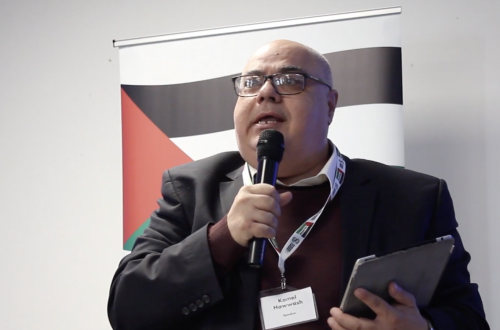This is a cross-post by Michael Weiss at The Weekly Standard.
Iranian authorities first arrested Shiva Nazar Ahari in 2001, when she was seventeen. Her ‘crime’ was attending a candlelight vigil in Tehran that commemorated the victims of 9/11. Since then, she’s taught Iranian homeless children and Afghan refugees’ children. In 2006, after she became the spokeswoman for the Committee of Human Rights Reporters (CHRR), Ahari was kicked out of university, whereupon her troubles really began.
She was re-arrested in June 2009 and sent to Tehran’s notorious Evin Prison, where she spent 33 days in solitary confinement. The cells are so small that a short person can’t even stretch her arms or legs. One informed observer has described them to me as ‘human coffins.’ Despite being verbally threatened by Saeed Mortazavi, Tehran’s prosecutor general, who told her she’d be murdered if she didn’t stop working on human rights campaigns in Iran, Ahari persevered. She was released in September 2009 on $200,000 bail and promptly resumed her defense of political prisoners. A month later, she paid a visit to the gravesite of Sohrab Arabi, a nineteen year-old student who’d been arrested in June 2009 for protesting Iran’s sham presidential “election” and was subsequently shot in the chest while in state custody.
In December of last year, Ahari was arrested yet again, along with two other activists, while en route to the funeral of Grand Ayatollah Hossein Ali Montazeri, a man considered to be the clerical inspiration behind much of the Green Revolution. Ahari went on hunger strike for two days, then fell ill and was taken to Evin’s prison hospital.
According to the Revolutionary Court, which is due to try her case on September 4, she stands accused of “anti-regime propaganda by working with the CHRR website” and “acts contrary to national security through participation in gatherings on November 4, 2009 and December 7, 2009.” These are the dates, respectively, of the anniversary of the U.S. embassy seizure, which is a sanctified Iranian holiday but last year became a ferment of democratic protest, and the Student Day demonstrations, which commemorate the murder of three Iranians students killed in 1953 by the Pahlavi government. Ahari maintains she was at home on both days.
However, the most serious charge against Ahari is “mohareb” (rebellion against God), which carries with it the death penalty.
Continue reading here.


